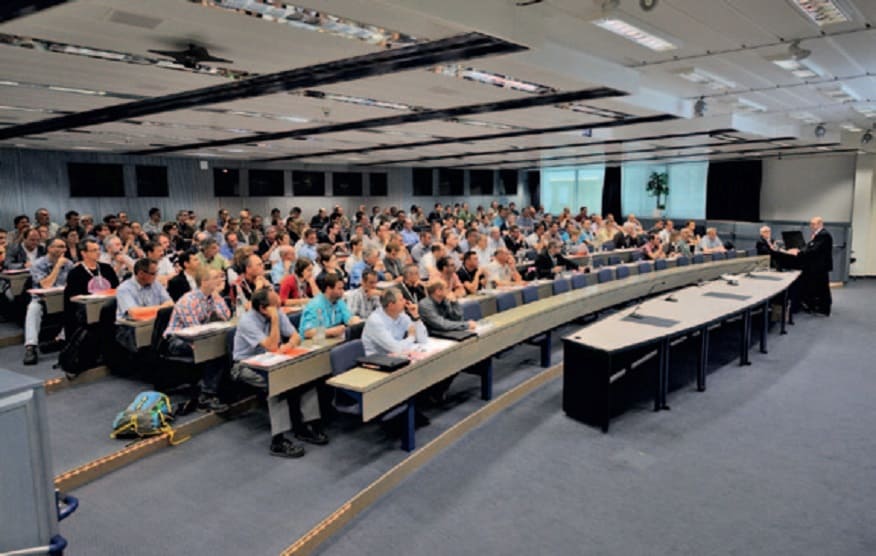Expert knowledge, cleverly conveyed
Dangerous goods safety advisors not only have to know their way through the thicket of regulations, they also have to communicate their requirements within the company. This requires skilful communication. New, industry-specific knowledge could be acquired at the Dangerous Goods Day in various specialist modules.

The Dangerous Goods Day organised by Swiss TS and GeFaSuisse on 12 June at EuroAirport Basel celebrated a small anniversary: it has been taking place for 15 years now - and still attracts a great deal of interest. Despite the Internet and the constant availability of all information, personal contact and the opportunity to exchange ideas still seem to be very attractive. Quite apart from the fact that the Dangerous Goods Day presents the latest innovations and the necessary knowledge in a prepared form year after year.
Difficult position of dangerous goods safety advisers
Dangerous goods safety advisers repeatedly come up against limits, not because of a lack of specialist knowledge, but because of their position in the company. Often their areas of responsibility and competence do not coincide, which makes it difficult for them to enforce their justified demands, but does not relieve them of responsibility.
DifficultSandwichPosition
responsibility. In addition, they are often the link between the company and external partners such as forwarding agents or waste disposal companies. They therefore find themselves in a real sandwich position between top and bottom and between inside and outside. The conference organizers therefore considered how they could provide the most effective support here and identified the main problem in communication. Because where the hierarchical line is broken or where different companies have to cooperate, good and well thought-out communication is required. How does a dangerous goods safety advisor convey his message so that it is received and accepted?
Good communication can help
Dr. Samuel Schüpbach, a proven communications expert, introduced the participants to the principles of interpersonal exchange and showed how easily misunderstandings can occur. Example: communicating by e-mail with the neighbouring office. Here, the message sent along with such a written communication usually leads to side effects that have little to do with the actual message. The reasons for this lie in the different levels at which sender and recipient communicate. Even those who keep their e-mails strictly on the factual level appeal to the emotional level of the recipient with their approach. The recipient wonders why he or she is receiving the message in this way and fills the knowledge gap with ideas and interpretations.
In general, the conference participants learned a lot about the most important human weaknesses,
Senders and recipients tick differently
which accompany the actual message as subtext and reliably torpedo it. The speaker quoted studies that come to devastating results. More than sixty percent of our messages are said to be misunderstood by the other person. Whether things are really that bad for us or not, it is certain that we still have a lot to learn in our everyday communication. If we are a little more skilful, we can save ourselves a lot of trouble and also achieve our goals much better. Since this is extremely difficult under time pressure, it is also a duty for dangerous goods safety advisors to internalize the so-called "Eisenhower principle": If you divide the tasks at hand into those that you have to do yourself depending on their importance and those that can be delegated, even hectic situations will relax and there will be room for solution-oriented communication again.
Air freight - rich in pitfalls
This exciting topic, which goes far beyond the actual specialist field, was explored in greater depth in one of the specialist modules using a practical example. In addition, the Dangerous Goods Day offered numerous other workshops that were directly related to the subject matter. One of these benefited from the fact that the conference was held on the airport site and enabled participants to visit the cargo hall. After all, dangerous goods are not only transported by rail and road. The "Dangerous Goods Regulation" is quite a tome in terms of its scope. The fact that it is very actively read, despite being valid for only one year, was demonstrated by the worn pages of the copy with which the Dangerous Goods Acceptance Check expert carried out the check on a package.
The rules to be observed are extensive and the pitfalls for freight forwarders correspondingly tight, which is understandable given the high risk that improper air freight can cause. Therefore, checklists are meticulously checked and ticked off point by point. It takes very little and a package is rejected. This may seem exaggerated, but an early check is essential.
Sensitive area air freight
rejection is preferable to blocking the transport at a later stage - for example during transhipment in Frankfurt. A good four per cent of the dangerous goods delivered have defects and have to be rejected, it was learned in the workshop. The fact that this quickly becomes unprofitable for the forwarder was demonstrated by the package that happened to be examined during the specialist module. It had already been rejected the day before due to a defect, but failed to pass the second attempt due to packaging that was now unsuitable. As each rejection costs 150 francs, the profit here is likely to have been extremely small.
Only change is constant
It cannot be changed, shippers, forwarders and dangerous goods safety advisors have to observe many and extensive regulations, which are also constantly updated. The next changes are already in the pipeline, which must be implemented by 2015. All relevant information will be provided at the next Dangerous Goods Day on 11 June 2014.









